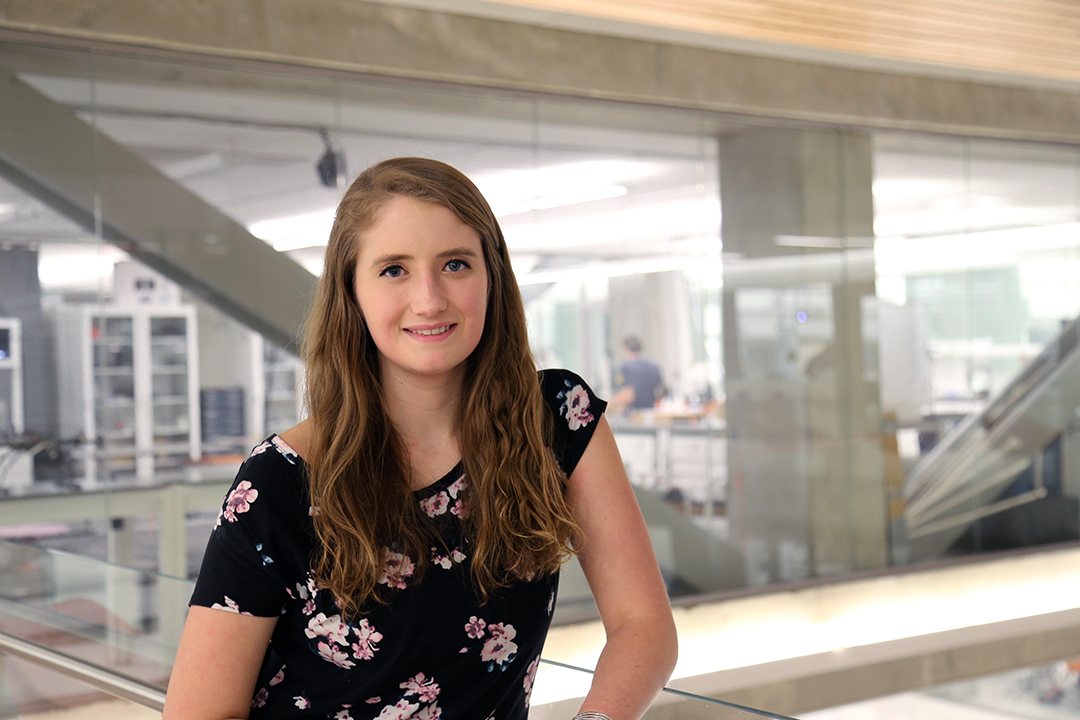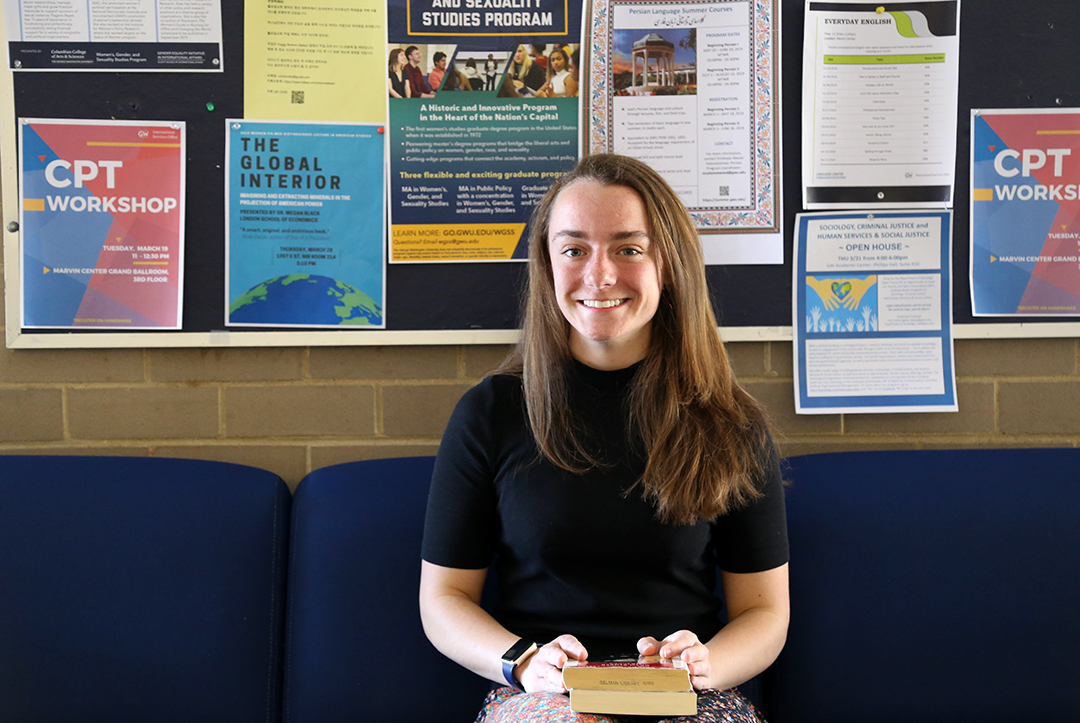By Kristen Mitchell
Samsara Counts, a senior majoring in computer science and mathematics, has developed tools to help patients on their path to recovery from eating disorders avoid damaging online content.
Encountering glamorized images of too-thin models with unhealthy features can be a major setback for patients, working to counteract the messages they hear in treatment and making them more likely to slip back into disordered behaviors. This content can be difficult to avoid without logging off the Internet altogether— a challenge for someone living in the social media age.
Ms. Counts’ solution is “filterED,” a Google Chrome browser extension for eating disorder patients that filters out and blocks triggering content.
“They can still connect with their friends on social media. At the same time they’re not going to be directly affected or worry about seeing those kinds of images,” she said.
The foundation of the browser extension is a deep learning classifier taught to identify triggering images from pro-eating disorder communities online that support disordered eating. She curated the images using social media posts tagged with pro-eating disorder hashtags and used deep learning, a type of machine learning, to build the classifier. In testing, it is accurate 79 percent of the time—a substantial improvement over chance.
She also developed a tool for clinicians called “explainED,” a web application for clinicians that lets users analyze websites for triggering image content as well as view what a patient sees when they visit their favorite blogs and social media platforms. This would help clinicians assess and understand what kind of content their patients engage with.
“If you’re a clinician, it’s likely that you’re pretty far out from the generations that actually use that media, so the tools I’m building aim to help them understand the space better,” Ms. Counts said.
At least 30 million people of all ages and genders in the United States are affected by eating disorders, according to the National Association of Anorexia Nervosa and Associated Disorders.
Ms. Counts began working on this project in fall 2017 under Robert Pless, chair of the Computer Science Department and the Patrick and Donna Martin Professor of Computer Science. She received an Undergraduate Research Award and support from the Department of Mathematics as a DATA Master Research Fellow to pursue this work.
Ms. Counts presented her paper with Dr. Pless on this work at the 2018 Applied Imagery Pattern Recognition (AIPR) annual workshop in the fall and was awarded best student paper presentation. She plans to present at Research Days later this month. Her project was also awarded an Honorable Mention for the 2019 NCWIT Collegiate Award from the National Center for Women and Information Technology.
Since getting involved with research during the spring semester of her first year of college, Ms. Counts’ projects have all had one common theme: using artificial intelligence (AI) for social good. She worked on a project that developed educational tools for low-literacy adults and another that connects people who would like to donate their kidney to a loved one in need but are not a match to others in the same position for a potential swap.
“I really enjoy helping people, and I feel blessed in a lot of ways. I‘m really grateful for the opportunities that I’ve had,” she said. “I feel like I am talented in certain ways, and if I can use my talents in a constructive way to help other people, that really resonates with me.”
Ms. Counts took her first computer science class as a high school senior and fell in love with the subject. She came to GW excited to learn and get involved in research. Through her involvement in the School of Engineering and Applied Science’s Student Peer Advisory Network, she learned about a lab opening for an undergraduate research assistant position and was awarded a Summer Undergraduate Program for Engineering Research (SUPER) to stay on campus and work.
Students interested in getting involved with research should talk to upperclassmen about their experiences with different projects. Research can be a big time commitment, and this could help students determine if it’s really something they want to pursue.
“The No. 1 determinant of success for somebody in research is just how much effort and time you put into it, and whether you stay consistent with that effort as time goes on and pressures change,” she said. “Following through is what is going to carry you to measurable achievements.”
Ms. Counts will graduate in May and plans to spend the next year doing research in Saarbrücken, Germany, where she will study under an expert in machine learning bias to learn more about fairness in algorithms. Her stay in Germany is funded by the Congress-Bundestag Youth Exchange for Young Professionals fellowship, a cultural immersion and professional program funded by the U.S. Congress and the German Bundestag. She will apply to computer science Ph.D. programs this fall.
To learn more about available research opportunities contact the GW Center for Undergraduate Fellowships and Research.





